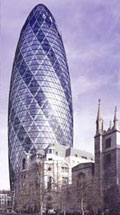Recently I gave a presentation at Victoria University on the work I am doing with my PhD. For posterity I have uploaded this presentation to Slideshare.
The talk covered the problem of digital architectural collaboration and how it is an immature field compared to other aspects of architecture. Due to the pressing nature of architectural collaboration the solutions to this problem will not be revolutionary, e.g. Second Life-like, but rather evolutionary, and at times even haphazard.
After introducing the problem-space I went on to discuss the emergence of the Building Information Model (BIM) as a central figure in digital architectural collaboration. However whilst BIM is an excellent productivity tool it does not address many of the industry's collaboration issues - in fact in many respects it compounds them.
WIth BIM identified as a significant yet problematic collaboration technology I outlined the need for an overriding set of digital collaboration principles that can be applied to future collaboration technology decisions. Rather than starting from zero I propose that we build on top of the underlying theories of distributed systems such as the Internet. With this need and methodology identified, I go on to introduce the seven principles of the Project Information Cloud:
- Simplicity
- Ubiquity
- Decentralisation
- Modular design
- Information awareness
- Context sensitivity
- Evolutionary semantics
Through application of these principles it is hoped we can establish Project Information Clouds within architectural projects. These unbounded information clouds will link significant amounts of projects data into intelligent, loosely joined, knowledge-bases.


